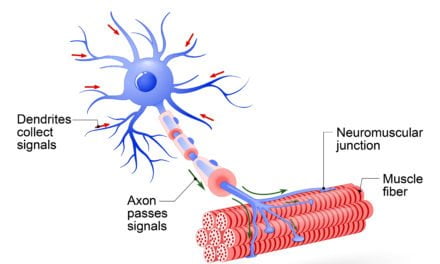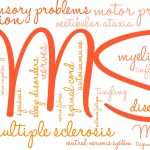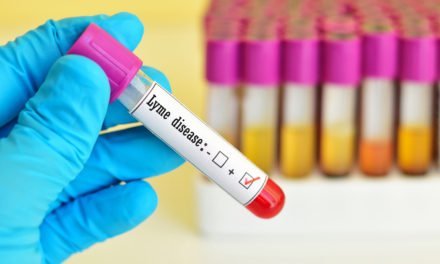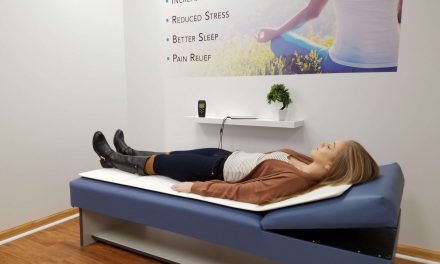
Groundbreaking Therapy for Autoimmune Reaction to Lyme Disease

Did you know that another important aspect of chronic Lyme Disease is the autoimmune reaction to Lyme Disease?
Recently, we’ve discussed this disease because May is Lyme Disease Awareness Month, and the number of diagnoses are climbing in the United States.
Lyme Disease is misunderstood, and it still often goes undiagnosed.
Previously, we published an article on the spirochete, and how the disease infiltrates the human body.
We then discussed the second most important aspect of this disease, which is the active infection.
The next aspect of this disease that is worth discussing is the autoimmune reaction to Lyme Disease.
This reaction is what so many individuals face when battling diseases like rheumatoid arthritis and various connective tissue disorders.
Chronic and long-term health conditions like autoimmune diseases are not only frustrating for the individual, but they are also frustrating for the physicians that cannot seem to offer long-term improvement with medications.
Is there another therapy that is just as effective?
PEMF therapy is a wonderful complimentary therapy to any treatment plan, and today’s article is going to share with you about how this therapy works, and how it can improve the health and life of those with chronic Lyme Disease.
Impact of PEMF Therapy on the Autoimmune Reaction of Lyme Disease
Lyme Disease, a tick borne illness, often becomes a chronic condition.
It is believed that what happens in the early stages after a tick bite will determine the outcome for an individual’s health.
This is because an individual may not always get the antibiotic treatment they need immediately after the bite occurs.
There are a few reasons treatment may be delayed including:
- No physical appearance of the “bulls-eye” shape that accompanies a tick bite. When an individual doesn’t see any “evidence” of a bite, they may not worry about it. This means that the infection can be present, but because it does not get treated, the individual may not present symptoms until a later time.
- The individual gets antibiotics, but the infection comes back at a later time. There are individuals who seek out their doctor’s advice immediately, and while an antibiotic is given it may not do the trick the first time around. Symptoms can present later, and they may often be worse than they were initially without any explanation. There is no rhyme or reason to why a certain individual has a case worse than another, but the sooner treatment can begin the outcome is usually less severe.
Antibiotics may be given intravenously if it does return, but that doesn’t stop what doctors refer to as an autoimmune reaction to Lyme Disease.
As the infection settles into the body, it becomes obvious that something isn’t quite right.
Some individuals may feel as though they have flu-like symptoms, and this often means that joint and muscle pain are prevalent.
The infection from Lyme Disease can also impact the brain, the lungs, and of course, the heart and the intestinal tract. Wherever an infection can live it may travel inside the body.
The effect is similar to what individuals with rheumatoid arthritis experience, or those with connective tissue disorders may experience.
The chronic fatigue, pain, and flu-like symptoms begin to weigh on the individual leaving them with a feeling of hopelessness, frustration, and leaving physicians with no choice but to just treat the symptoms.
The good news is that PEMF therapy can used by those who suffer from chronic Lyme Disease regardless of the course of antibiotics.
Research has shown that PEMF therapy can have a positive impact on the individual by boosting the immune system and reducing inflammation and pain while improving an individual’s quality of life.
There is research specifically related to using PEMF’s for Lyme Disease, and how patients responded to it.
This groundbreaking therapy is changing lives, and it is changing how medical doctors treat their patients.
How does PEMF therapy induce healing and begin working on the body?
How PEMF Therapy Works on the Autoimmune Reaction to Lyme Disease
PEMF therapy has been shown to be effective in fighting chronic illnesses and other physical conditions.
The above video is a testimonial from someone that used PEMF therapy, that suffers from fibromyalgia.
The reason for sharing this video is simple-fibromyalgia is an autoimmune disease.
This disease is usually accompanied with chronic fatigue, pain, and stiffness at times.
The physical attributes of fibromyalgia are similar to what individuals experience with Lyme Disease.
PEMF’s are effective because they target the organisms that can hide inside the cell.
This intracellular safehouse for organisms is often what physician’s cannot see.
The immune system does not detect that this organism exists, and therefore, the immune system cannot approach the organism to rid the body of it.
PEMF therapy is effective because research has shown that it opens up the membranes of cells and allows the organism to be penetrated.
This destroys the imbalance, defect, or disease and the repair on the cells begins.
Cells have many jobs, and one of them is to eliminate waste.
It is through the effectiveness of PEMF’s that these cells become open and can readily eliminate the waste rather than harboring it.
Antibiotics and nutritional therapies may not be able to open up the cell membranes, and this is where PEMF therapy becomes so effective.
Improving circulation, reducing inflammation, and ultimately reducing pain can dramatically improve the lives of those with autoimmune diseases as well as other chronic conditions.
If you would like to learn more about the effectiveness of PEMF therapy on the autoimmune reaction of Lyme Disease, and how it can help heal the body down to the cellular level, please visit www.pemfsupply.com today.

















All of this info is interesting, BUT no where in any of these articles Have I found the frequencies used or suggested ones. I know there are a few frequencies used for each diseases or problem. I have seen list of frequencies from Rife, but don’t know how they adapt too OMI. Some of the frequencies are in the 1000.
Don [email protected].
Hi Don,
Thank you for your comment. We are not doctors, nor are we permitted by the FDA to give frequencies and time-frames. We encourage you to research online and take a look at some independent studies that have published those based upon their case studies.
Kind regards,
Tammy